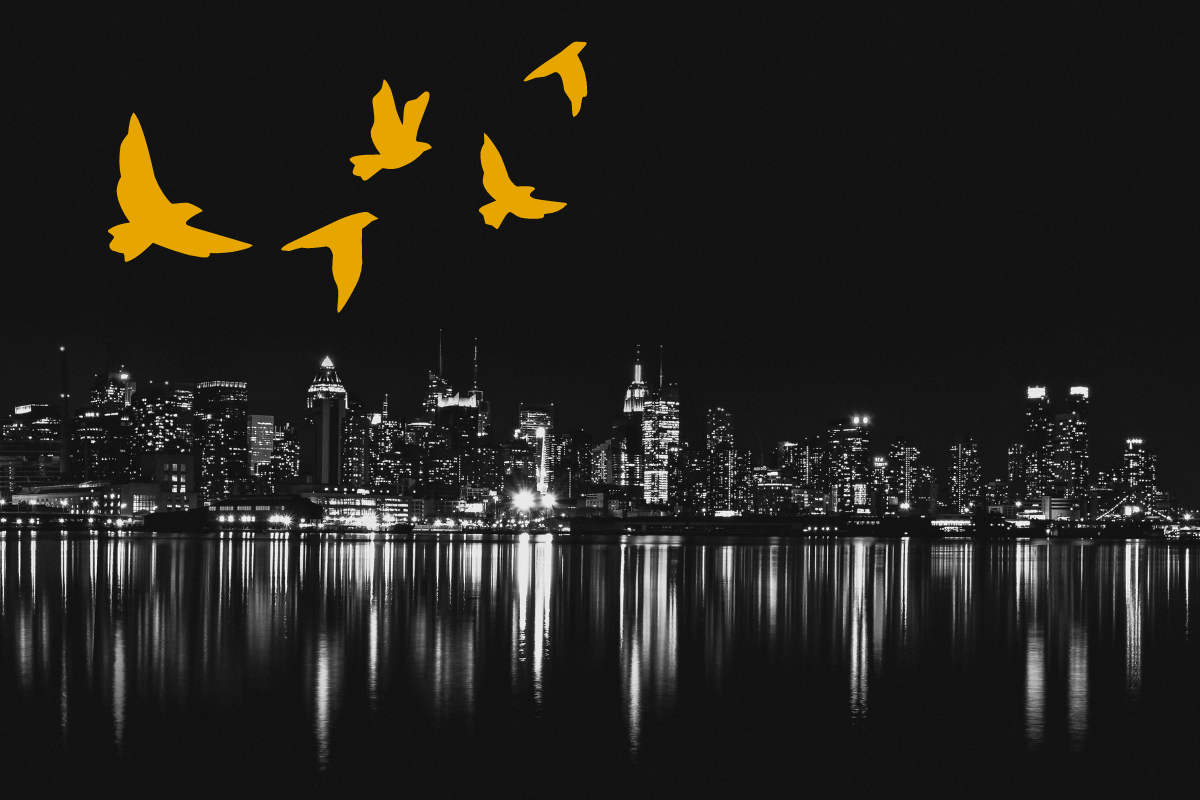Each year, billions of birds migrate north in the spring and south in the fall, with most flying at night and using the stars for navigation. However, when they pass over large cities, bright artificial lights and skyglow can disorient them, leading to collisions with buildings and windows.
While the lights can throw birds off their migration routes, the real danger comes from the energy they expend while flying around in confusion and calling out. This exhaustion makes them more susceptible to other urban threats.
While completely turning off city lights isn’t a practical option, researchers are exploring ways to balance human lighting needs with the safety of migratory birds. The Guardian reports that any city with glass buildings and bright lights poses a threat to birds, with most collisions occurring with low- and medium-rise structures, though skyscrapers have higher fatality rates.
A recent study from the Cornell Lab of Ornithology highlights Chicago, Houston, and Dallas as particularly dangerous for migrating birds. The study emphasizes that efforts to reduce artificial light at night (ALAN) in these cities could have a significant impact on protecting bird populations.
NYC birds now have a safer city thanks to Friends of Animals and other members of the Lights Out NYC Coalition that pressed City Council to pass legislation to help protect migratory birds. One of the life-saving “Lights Out” bills passed unanimously by the city council in 2022 requires city-owned or leased businesses to shut off non-essential lighting during peak migratory periods and times. Specifically, businesses must shut off non-essential lighting from 11 p.m. to 6 a.m. from Aug. 15 to Nov. 15, and from April 1 to May 31.The other bill mandates the city to install occupancy sensors in every building owned, over the next eight years, to also reduce light pollution.
The coalition is pressing the Council to pass a bill to extend the lights-out policy to some privately owned buildings.
In the meantime, advocacy groups across North America are taking action by educating communities, businesses, and policymakers on the importance of adopting bird-friendly practices to help reduce these preventable deaths. Take Action by checking out these guidelines from birdcast.info.
Guidelines for EVERYONE:
· Turn off all non-essential lights from 11 p.m. to 6 a.m. each night during migration season.
· Do not use landscape lighting to light up trees or gardens where birds may be resting.
· For essential lights (like security lighting) use the following dark skies friendly lighting practices:
· Aim lights down
· Use lighting shields to direct light downwards and to avoid light shining into the sky or trees
· Use motion detectors and sensors so lights are only on when you need them
· Close blinds at night to reduce the amount of light being emitted from windows
· Share your success on social media and with the press, your commitment to go lights out to save birds is newsworthy.
Additional Guidelines for Buildings Taller Than 3 Stories:
· Extinguish or dim: Exterior and decorative lighting (i.e. spotlights, logos, clock faces, greenhouses, and antenna lighting); lobby/atrium lighting; and lighting in perimeter rooms on all levels of the building.
· Avoid: Floodlights; illuminating interior plants or fountains, and unoccupied floors; scheduling cleaning crews after dark; and blue-rich white light emissions (lighting with a color temperature of over 3000 Kelvin).
· Use: Desk lamps or task lighting rather than overhead lights; blinking lighting in place of continuously burning lights; and warm light sources (less than 3000 Kelvin) for outdoor lighting.

